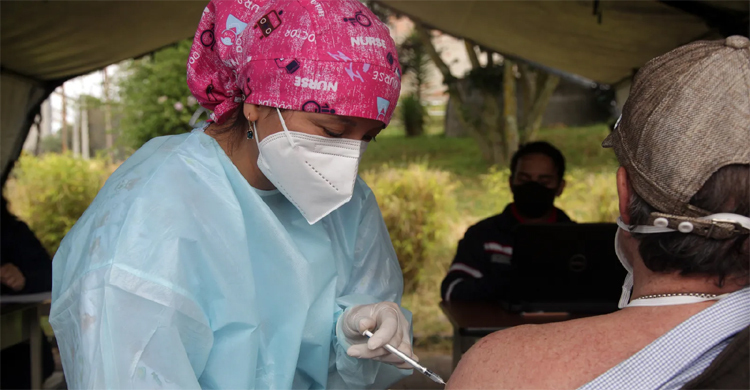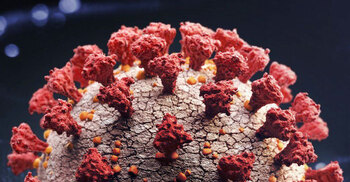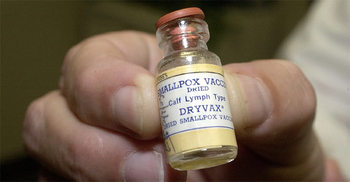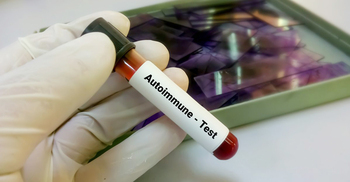The hunt for a universal Covid-19 vaccine

In the mid 1980s, Jonathan Heeney was a PhD student at the US National Institutes of Health (NIH), Maryland, when he was told to fly to Oregon – on the opposite side of the country – to investigate a mysterious new disease which was causing a surge of sudden deaths in a group of captive cheetahs.
For Heeney, it proved to be his first known encounter with a coronavirus. "We eventually determined that this was a coronavirus which had jumped from domestic cats into these cheetahs," he says. "And because cheetahs were a new host, it caused a lot of death and destruction. So that was my introduction to them."
Four decades on and Heeney is at the helm of DIOSynVax, a biotechnology company based in Cambridge, UK, who recently received a $42m (£34m/€41m) grant from the Coalition for Epidemic Preparedness Innovations (CEPI), the foundation backed by Bill and Melinda Gates, the Indian and Norwegian governments, and the World Economic Forum, among others.
Heeney and colleagues face a challenge that has long proved insurmountable for scientists: to develop vaccines that can not only protect against a single coronavirus, but multiple strains, varieties, and perhaps even entire families of them. A comparable feat has never been managed in the history of virology, after more than two decades of chasing the same goal in influenza yielded little of note. Some have even compared the task's ambition, scope and difficulty to the infamous Manhattan Project of the 1940s, which pushed the boundaries of physics at the time, and yielded the world's first atomic bomb.
Money is being thrown at the target in unprecedented sums. CEPI have allocated an initial budget of around $200m (£169m/€193m), with the NIH adding an additional $36m (£30m/€35m) to the pot. Buoyed by their success in developing one of the first Covid-19 vaccines, Moderna has recently entered the fray, announcing their intention to produce a vaccine which could protect against all four coronaviruses that cause the common cold.
Heeney knows the road ahead better than anyone, having also spent the last few years attempting to develop a single vaccine that can protect against different viral haemorrhagic fevers – Ebola, Marburg virus and Lassa fever.
"We're taking a similar approach," he says. "It's all about looking at the structural biology, the genetic relationships, what changes in these viruses, and what doesn't change."
Variant-proof vaccines
All scientists agree that a truly universal vaccine, which could protect against every single coronavirus that might emerge in future, would be a genuinely game-changing moment for human health, especially in the wake of the devastation caused by the Sars, Mers and Sars-CoV-2 (the virus that causes Covid-19) outbreaks of the last 20 years.
"A universal coronavirus vaccine would be a tremendous advance," says Wayne Koff, president and CEO of the Human Vaccines Project. "My expectation is that progress likely will be incremental, though there needs to be a major coordinated effort to achieve this goal."
But while this would be the pinnacle of pan-coronavirus vaccine research, it remains to be seen whether it can actually be achieved. Instead some feel that various intermediate targets are more realistic, before scientists consider expanding the remit of these jabs.
As a result, the first step towards a possible universal coronavirus vaccine is likely to be a so-called "variant-proof" vaccine, which aims to protect against all current and future strains of Sars-CoV-2 and help end the worst impacts of the pandemic. With the continuing emergence of problematic variants causing repeated surges in case numbers and hospitalisations, beginning with Alpha in September 2020, to Delta, Omicron, and now BA.4 and BA.5, the need for such a vaccine remains high.
"A variant-proof vaccine could slow the transmission of Covid-19 and stopping such transmission is the only way we can move past the pandemic," says Patrick Soon-Shiong, CEO of ImmunityBio, one of six US government-funded research groups or companies taking on the challenge.
In order to do this, scientists are trialling a kaleidoscope of vaccine technologies. They range from modified, harmless viruses known as adenoviruses to ferritin nanoparticles and self-amplifying RNA, which works in a similar fashion to messenger RNA (mRNA) except it can copy itself once inside the body's cells, meaning much smaller doses are needed.
"Having multiple platforms can help," says Koff. "So for example, the mRNA platform offers speed, while other platforms may provide additional benefits in terms of ease of shipping around the world or durability of immunity."
In each case, the general idea is more or less the same. Whether carried by a nanoparticle or an adenovirus, each vaccine contains a variety of different fragments of the Sars-CoV-2 virus' spike proteins (which the virus uses to bind to human cells to gain access), and nucleocapsid proteins (which store its genetic material). Some vaccine-makers are looking to incorporate as many fragments as possible to increase the chances of having a broader immune response, while others are focusing on specific parts of the virus that seem to be conserved across each of the strains that have emerged so far. At Duke University, virologists are targeting a particular part of the spike protein known as the receptor binding domain (RBD), as this region appears to have relatively little variation between different forms of the same coronavirus.
"We designed our vaccine to focus the immune system on a site of vulnerability for the virus, which is the receptor binding domain," says Kevin Saunders, director of research at the Duke Human Vaccine Institute. "The RBD amino acid sequence is similar among viruses that belong to the same betacoronavirus group."
Because of the increased complexity of the challenge, progress will be slower compared to the first wave of Covid-19 vaccines. None of the variant-proof vaccines in development have progressed beyond phase I clinical trials (the first test in humans), but the initial data appears to be promising.
Earlier this year Gritstone bio reported that their own variant-proof candidate could train the immune system to recognise a broad range of viral proteins, while in June 2021 ImmunityBio revealed that their vaccine elicited immune responses against both the Alpha, Beta and Gamma variants of Sars-CoV-2.
"Our vaccine generated memory B cells which released massive amounts of antibodies against the virus, but also T cells that killed the infected cells," says Soon-Shiong. "It stopped the virus in its tracks, and was no longer detectable in the nose and lungs."
The most exciting findings so far have come from the Walter Reed Army Institute of Research, who found that their vaccine showed immunising capabilities against a range of Covid-19 variants as well as the original Sars virus when tested in non-human primates. Readouts from a phase I trial are now expected imminently, with plans already underway for a larger phase II study later in 2022.
Tackling the common cold
Rather than entering the competitive landscape of Covid-19 vaccines, other researchers have decided to look at different forms of pan-coronavirus vaccines.
In early 2021, as scientists at Moderna's offices in Cambridge, Massachusetts began turning their attention to understanding how Sars-CoV-2 might continue to evolve, they started to examine the other four coronaviruses which are known to be endemic in humans.
These are OC43, HKU1, 229E, and NL63, not household names, but the majority of us will have unknowingly encountered them at some point in our lives. They are responsible for around 30% of common colds in adults, and while these viruses have nowhere near the fatality rate of Sars-CoV-2, they can still lead to lower respiratory tract infections and pneumonia in the vulnerable.
For Andrea Carfi, Moderna's chief scientific officer for infectious diseases, it seemed a natural next step to develop a vaccine that could help protect the elderly and immunocompromised from these viruses by identifying commonalities in their protein sequences.
"We noticed that these seasonal respiratory viruses are causing a significant level of hospitalisation and mortality, especially in older adults," says Carfi. "Although no one likes a cold, the inconvenience and loss of productivity are undeniable, the most important impact we anticipate for this vaccine is to protect vulnerable groups from hospitalisation."
This in itself is already an ambitious goal, attempting to vaccinate against a group of different coronaviruses, but other scientists are setting the bar even higher. Rather than designing vaccines against existing viruses, they want to initiate humanity's preparations for the next pandemic.
Pamela Bjorkman, a professor of biology and biological engineering at the California Institute of Technology, is leading a project to develop a jab which can immunise against any sarbecoronavirus – severe acute respiratory syndrome–related coronavirus – a collective which includes Sars, Mers, Sars-CoV-2 as well as other as-yet-unknown threats harboured within animals. Heeney's team is targeting an even larger viral cluster – the entire group of betacoronaviruses, one of four groups of coronaviruses which includes the sarbecoronavirus sub-group.
While a pan-betacoronavirus jab would still not come close to being a universal coronavirus vaccine – it would still leave the other three groups of coronaviruses, alpha, delta and gamma, untargeted – it is still an incredibly challenging goal. To illustrate the sheer scale of the task, there are thought to be thousands of as-yet undiscovered betacoronaviruses residing within more than 400 different bat species.
"A pan-betacoronavirus vaccine is ambitious," says Carfi. "Major challenges include the diversity of betacoronaviruses and developing robust surveillance networks. Viruses have repeatedly shown the ability to exploit holes in your strategy that you didn't know were there."
However, Heeney feels that many of our current vaccine development strategies are limited by being relatively primitive in nature. Instead of combining as many viral fragments as possible into a vaccine, with the hope of stimulating broader immunity, he is pushing for more sophisticated computer modelling.
At DIOSynVax, his team are employing the latest machine learning algorithms to probe the structure and evolution of betacoronaviruses across multiple strains and families with the hope of identifying hitherto overlooked vaccination targets, which are intrinsic to the survival of all these viruses.
"It takes a lot of deep thinking," says Heeney. "You can't take a superficial approach. We look beyond the spike protein because it's one of the most variable proteins that these viruses have, so you're always trying to hit a moving target. Instead we focus on proteins that are really important for structural integrity, and the viability of the virus, because changing those would be like changing your DNA."
Succeeding where flu vaccines have failed
Over the past year, a series of studies have provided welcome encouragement that a broad spectrum coronavirus vaccine might be feasible. Last autumn, the esteemed virologist Linfa Wang, an infectious diseases professor at Duke-National University of Singapore Medical School, Singapore, found that Sars survivors who had received the Pfizer-BioNTech Covid-19 vaccine had antibodies in their blood capable of protecting them against Sars, the Alpha, Beta and Delta variants of Sars-CoV-2, and five other coronaviruses which reside in bats and pangolins.
Since then, a team of scientists at Massachusetts-based biotech Adagio Therapeutics have studied long-lasting immune cells called memory B cells from Sars patients and identified neutralising antibodies which are effective against a broad range of betacoronaviruses.
Jeffrey Taubenberger, a senior investigator in viral pathogenesis and evolution at the National Institutes of Health, feels that while a full universal coronavirus vaccine may be out of reach, these studies indicate that a sarbecoronavirus or betacoronavirus jab may indeed be feasible.
"Coronaviruses are extremely diverse, in several large genera," says Taubenberger. "Generating broadly protective vaccines that would provide protective efficacy against all coronaviruses will be very difficult in the short-term. A broadly protective betacoronavirus vaccine is a more realistic and practical goal."
The big question for all pan-coronavirus vaccine developers is whether they can succeed where pan-influenza vaccines have failed. The NIH's National Institute of Allergy and Infectious Diseases unit has an annual budget of approximately $220m (£180m/€212m) for universal flu vaccine research but progress has been minimal despite decades of striving. However, there is hope that the challenge may be slightly less complex in coronaviruses because in general, they are not so prone to mutating.
"Even though we are suffering through Sars-CoV-2 variants, coronaviruses have less propensity for mutation than flu viruses," says Bjorkman. "The fact that we have so many people worldwide who have been or are infected with Sars-CoV-2 is what's given this virus a vast playing field for mutations, even though its mutation rate is not intrinsically very high."
Efforts have also been boosted by the development of some ingenious new technologies for examining the protective capabilities of vaccines against coronaviruses that have not yet spread to humans. VBI Vaccines, who are developing a pan-sarbecoronavirus vaccine that would target the close relatives of Covid-19. Their approach is similar to that of Bjorkman's lab, and involves taking the genetic sequences of various coronaviruses found in bats and pangolins, from publicly available databases, and inserting them into a pseudotype virus. This is a virus that has been genetically altered so it cannot replicate, making it harmless and allowing scientists to test their vaccine against these novel pathogens in a test tube.
So far VBI's vaccine has elicited strong neutralising responses against the Delta, Beta, Omicron and Lambda variants of Sars-CoV-2 as well as RaTG13, a coronavirus which is closely related to Sars-CoV-2 but is currently found only in bats.
Scientists are hopeful that the first variant-proof Covid-19 vaccines will be available by 2024, potentially ushering in a wave of coronavirus jabs offering increasingly broad protection. For many, this would be up there with some of the most important breakthroughs in modern healthcare.
"The development of effective pan-coronavirus vaccines would be groundbreaking, as they would have global applicability and utility as well as requiring ingenuity and perseverance," says Saunders. "Coronaviruses have caused multiple deadly outbreaks and it is likely that another outbreak will occur. Having vaccines that prevent death from a future outbreak would be a tremendous achievement in global health."
Source: BBC





